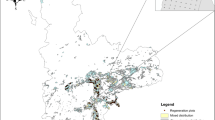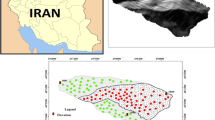Abstract
The objective of this study was to examine postfire regeneration of tree, shrub, and dwarf shrub species, in relation to levels of damage in four planted pine forests (Pinus pinea, Pinus pinaster) in Andalusia. A prefire vegetation map was used for detailing species composition, vertical structure, and density and another for detailing the extent and intensity of fire damage. Between 3 and 7 years after the fires, an inventory was made of the vegetation in each area, using the step-point method. The information thus obtained was used to determine the amount of cover in the dwarf/shrub and tree layers, the frequency of species in each of the layers, floristic richness, and diversity (Shannon index). The botanical composition of the dwarf and shrub layer was analyzed using TWINSPAN. Variables were poorly correlated with level of fire damage, which suggests that the forests in this study followed the autosuccession model. Because of the artificial origin or seminatural condition, regeneration of the dominant tree species is poor, and it seems unlikely that forests will recover to their prefire state. Therefore action is recommended to restore these ecosystems.
Similar content being viewed by others
Author information
Authors and Affiliations
Rights and permissions
About this article
Cite this article
PÉRULA, V., NAVARRO CERRILLO, R., REBOLLOo, P. et al. Postfire Regeneration in Pinus pinea L. and Pinus pinaster Aiton in Andalucia (Spain). Environmental Management 31, 0086–0099 (2003). https://doi.org/10.1007/s00267-002-2786-4
Issue Date:
DOI: https://doi.org/10.1007/s00267-002-2786-4




